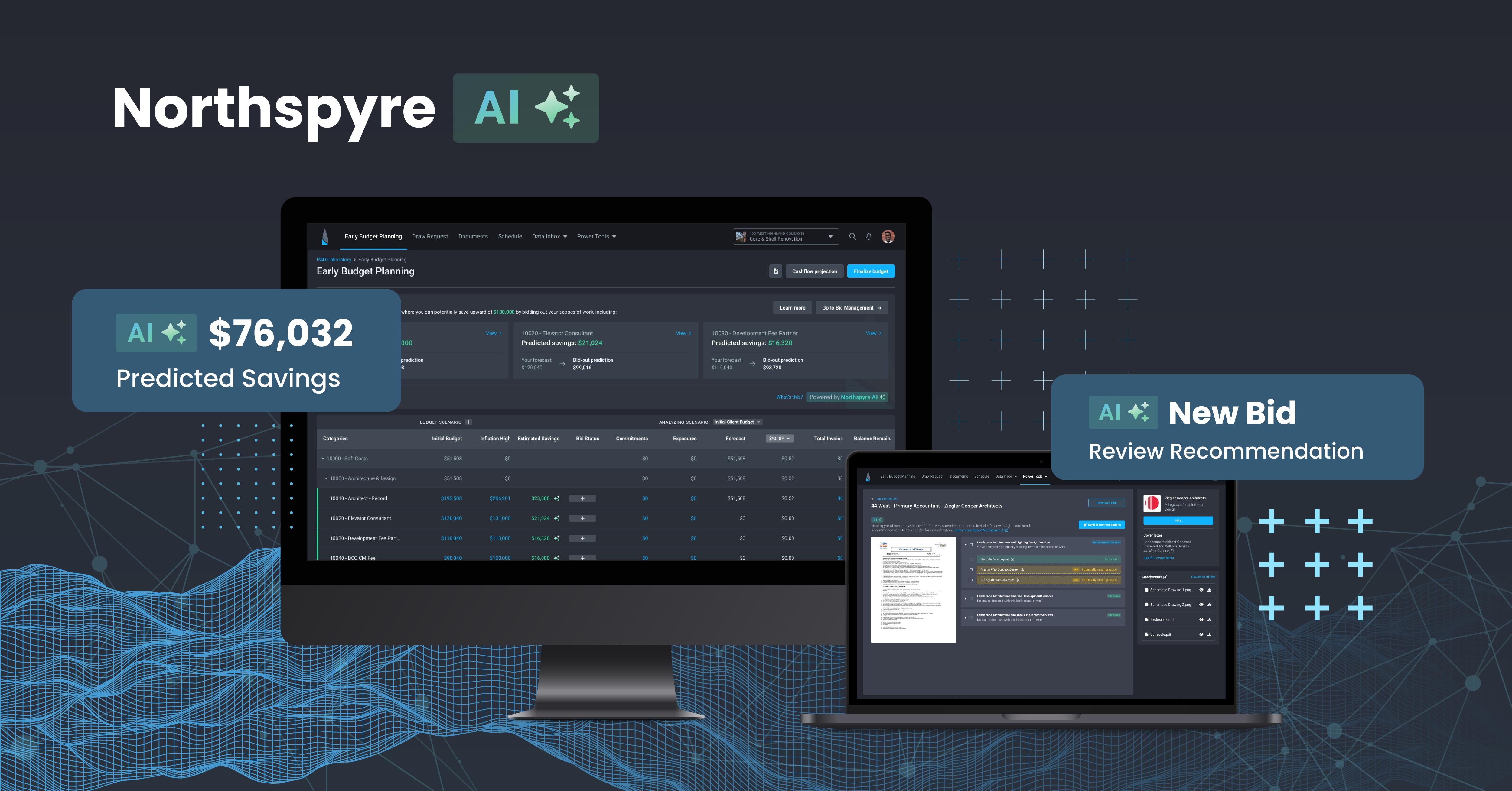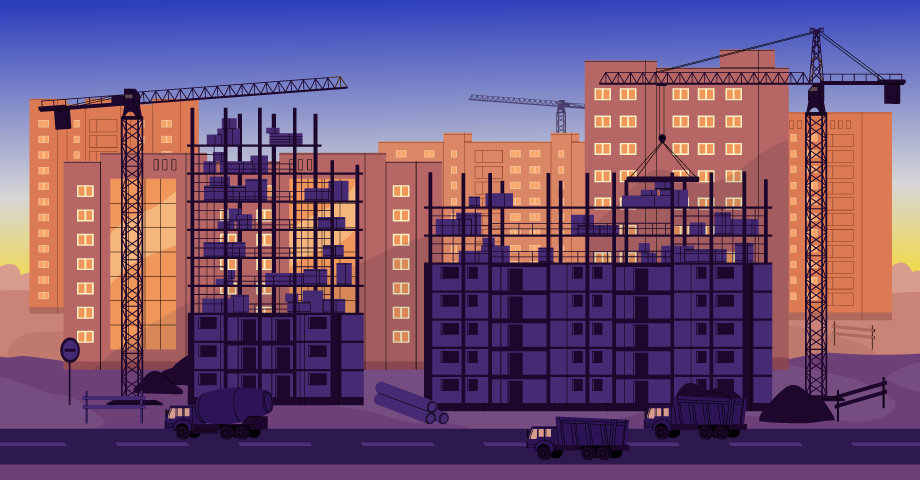-

Revolutionizing Real Estate Development: Introducing Northspyre AI & More
Sophisticated developers understand that half the battle in ensuring a project’s success happens before construction begins. In the pre-development stage, crucial decisions are made: Are you working with the right vendors? Are your vendor bids and contracts airtight to minimize future change orders? Simply put, are you setting yourself up for success? Or are you
-

How Tech Makes Real Estate Development Sustainable and Profitable
Sustainability is transforming commercial real estate. Commercial properties are responsible for 40% of global emissions, and as climate change poses an increasing risk, real estate stakeholders are investing in solutions to preserve the returns and longevity of assets. As a result, sustainable development practices and Environmental, Social and Governance (ESG) initiatives have become the largest
-

How Real Estate Development Software Unites Finance and Project Teams
Over the course of a complex development process, your project management and financial teams need to communicate to bring projects in on time and under budget. Finance and project teams work together to ensure a project is financially feasible, capital is deployed correctly, and investors or other key stakeholders receive reports on a project’s progress.
-

How to Improve Your Real Estate Development Process in 2024
The real estate market will have a mixed outlook in 2024, and while economists are hopeful the U.S. will avoid a recession and achieve a soft landing, economic growth remains slow and downside risks will stay high. As a result, investment activity and capital deployment are expected to remain stalled through the first half
-

How to Use Real Estate Project Management Tools to Reduce Admin Tasks and Cut Costs
Project managers are responsible for overseeing many components of a complex real estate development project, ensuring capital is strategically deployed, creating and executing timelines, and navigating the regulatory and zoning process. As a result, project managers are often overburdened with administrative tasks, from managing documentation such as permits, contracts, change orders, or zoning requirements, to
-

5 Tips for Vetting Real Estate Software Development Company Options
The commercial real estate industry has undeniably embraced technology. Nearly 100% of commercial real estate companies have invested in technology and are expanding technology programs—and technology advancement continues to rank at the top of trends driving the industry forward. As in daily life, tech-powered tools are quickly becoming a standard part of real estate operations,
-

Why Sunbelt Markets Will Continue to Boom in 2024
Over the last decade, the Sunbelt emerged as a major site of growth in the commercial real estate market. Due to robust population growth, CRE industry experts are expecting the region, which stretches across eighteen states in the southeast and west including Florida, Texas, Arizona, and George, to continue to boom in 2024 and beyond.
-

How CRE Developers Can Accurately Predict Demographic Trends
Real estate development projects are driven by demographics. Where people live, travel and spend time, along with annual income, education, household formation and age, are all details that inform and shape a city’s construction pipeline. Often, developers need evidence of specific demographic criteria to merit a development thesis before land acquisition or ground breaking, and
-

CRE Developers’ Guide to Transit-Oriented Community Incentives
Efforts to boost housing production and encourage sustainable communities often include transit-oriented development initiatives and incentives. Transit-oriented development (TOD) is a trend toward integrated urban spaces that allow for people, buildings, and public space to coexist, with easy cycling or walking access and transit service to job-rich city areas. In order to spur housing production